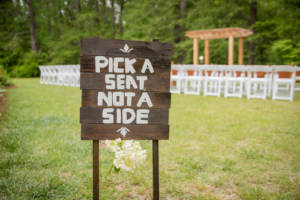Got a Lopsided Guest Count? Understand Your Options
 Weddings have changed a great deal in the last century thanks to shifting societal norms and couples’ desires for meaningful, personalized experiences. Yet some vestiges of older traditions remain. Even modern wedding planning is often based on the assumption that both spouses-to-be have roughly equal representation in their guest list. A lopsided guest count can present some challenges, but these can be overcome by observing smart advice.
Weddings have changed a great deal in the last century thanks to shifting societal norms and couples’ desires for meaningful, personalized experiences. Yet some vestiges of older traditions remain. Even modern wedding planning is often based on the assumption that both spouses-to-be have roughly equal representation in their guest list. A lopsided guest count can present some challenges, but these can be overcome by observing smart advice.
The Stories Behind the Numbers
Several factors can lead to a lopsided wedding guest list. One may have a larger family or a wider social circle. On the other hand, one of you could be an only child, have a smaller family, or be estranged from your relatives. Even so, some soon-to-be-married pairs find that this situation can bring about a few potential concerns. You could be worried about one family feeling overwhelmed by the other, as one writer expressed in a letter to the Emily Post Institute. If your family is unsupportive of your union and no resolution appears to be in sight, you may have no choice but to avoid inviting them. You could also worry about how this may affect your spending plan, especially if either family offers financial contributions.
How much will a lopsided guest count impact your wedding? According to Jaimie Mackey, it depends on your event. Writing for Wedding Wire, she explains that communication is vital to ensuring your plans go smoothly. You must inform your families that your numbers won’t be even, especially when you’re working out the budget. Not only that, it’s wise to set your budget early and determine who will help foot the bill. Nowadays, it’s common for a couple’s families to have already blended to the point of where no one cares whose “side” a guest is on.
How To Handle Your Guest Count
Experts are divided on how to deal with guest counts that are unevenly split between families. Martha Stewart Weddings writer Aleesha Thomas stresses that your list doesn’t have to be divided 50-50 between you and your partner. With that said, you should make sure that it’s not lopsided because one set of parents invites a crowd at the expense of the other. If you’re mostly paying for your affair on your own, this may not be a problem since you have more control over who gets invited.
Also, keep in mind that you don’t have to assign “sides” when it comes to seating your attendees. It’s common for LGBTQ couples to use open seating plans and instruct their ushers to seat everyone in all areas evenly, as an August 2014 Brides article remarks. As for the reception, Wedding Wire suggests placing your guests in relational groupings throughout your venue.
Of course, it’s understandable to feel sorrow if you have unsupportive parents refusing to attend. Fortunately, you may have allies willing to stand in their place. A recent Equally Wed blog post mentioned Sara Cunningham, an Oklahoma woman who grew to accept her own gay son and wrote a memoir to help other parents of LGBTQ individuals. She’s volunteered to be a stand-in for absent parents at weddings, and you can find her on Twitter.
Don’t Fret, but Find Good Solutions
Couples can fall into the trap of striving for perfection when designing their weddings. What are some key takeaways from issues such as a lopsided guest list? Understand that most wedding planning problems aren’t as major as you may first perceive them to be. Next, try shifting your focus to logical and budget-friendly solutions. Finally, your goal should be creating an event that both you and your guests will enjoy. Uneven guest counts will seem less like problems and more like simple realities to be accommodated during your planning.














